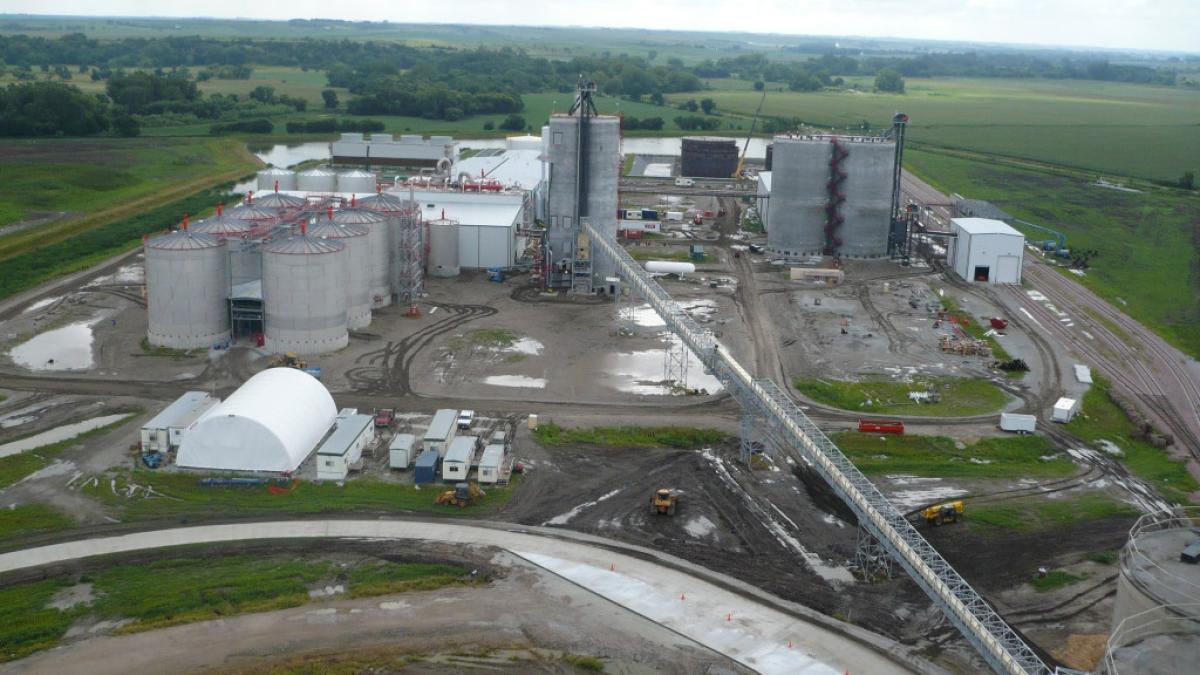Valero Renewable Fuels, LLC. in Albion, Nebraska. Courtesy Nebraska Ethanol Board.
The ethanol and ethanol co-product industry continues to be a main economic driver in Nebraska, producing near-historic averages in 2020, despite lower ethanol prices and COVID-related production issues, according to a new University of Nebraska-Lincoln study.
The study found that the positive impact of the industry is spread throughout the state, directly creating 1,758 jobs, many of which are in small communities. The 2020 report, based on the most recent data available, confirms the importance of the ethanol industry in Nebraska and points toward potential future growth. In total, the Nebraska ethanol industry was responsible for just over $4.4 billion of economic activity.
Like many industries in 2020, ethanol production was harmed by the COVID-19 pandemic through production difficulties but also by weakened output prices, a trend that has prevailed for some time. However, the industry continues to expand offerings of highly valued co-products, insulating itself from cyclical ethanol fuel prices.
As recently as 2013, co-product offerings were limited to dried distiller’s grains. Since then, additional co-product markets have emerged, placing unique values on wet distiller’s grains, modified distiller’s grains, corn oil, hand sanitizer, starches, and high fructose corn syrup.
The total value of production in the industry was $3.433 billion in 2020, of which 65.6% was the primary product (ethanol) and the remaining 35.4% of value was made up of various co-products. Over the five-year period from 2016-2020, the value of ethanol and co-product production averaged 35% of cattle production, 63% of corn production, and 141% of soybean production.
Additionally, ethanol and co-product production are directly responsible for the equivalent of 1,758 full-time jobs. This averages to 73.25 jobs per plant, with a median of 51 jobs per plant. The minimum number of jobs directly created by an ethanol plant is 27, with a maximum of 400. For reference, half of the plants included in the study are in towns with fewer than 1,900 residents.
According to Tim Meyer, a co-author of the report and associate professor in the university’s Department of Agricultural Economics, it is no surprise that ethanol plants are general economic activity drivers. Using IMPLAN, a modeling technique used to quantify indirect economic activity, the ethanol industry is responsible for creating an additional 6,242 jobs and $977 million of economic activity, on top of the $3.433 billion of direct output.
“The Nebraska ethanol and co-products industry continues to provide a positive economic impact on the state,” Meyer said. “Given the industry’s ability to persist and thrive through low ethanol prices, it is our opinion ethanol will continue to be a large driver of economic impact for an extended period of time.”
The study and report were produced by the University of Nebraska-Lincoln’s Department of Agricultural Economics and Bureau of Business Research, in partnership with the Nebraska Ethanol Board. It is available at https://agecon.unl.edu/ethanolimpact.
